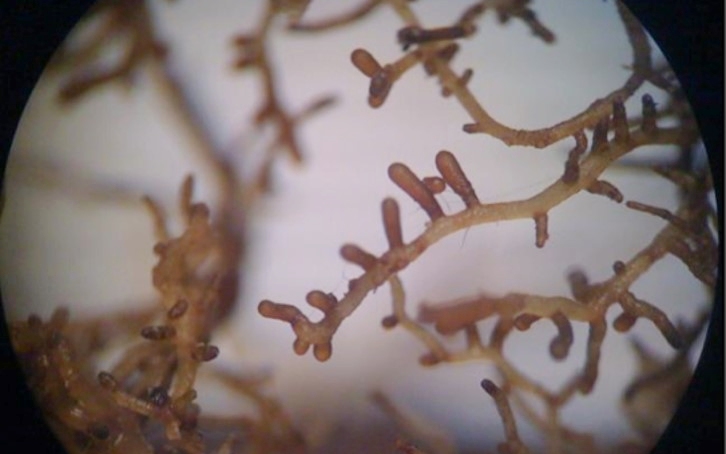FUNDAMENTALS
Before delving into advanced techniques for truffle cultivation, there are some fundamental considerations that apply to the black winter truffle (Tuber melanosporum). (The summer truffle (Tuber aestivum/uncinatum) requires somewhat different considerations.)
For further detail, please feel free to contact us.

Climate and Average Temperatures
Average monthly temperature figures can have a significant impact on black winter truffle cultivation. As a general guide, seasons need to be clearly defined, but not characterized by extremes.
The typical average temperatures for the coldest month in natural truffle areas are between 35-45 degrees Fahrenheit. We believe that areas with warmer winters can be productive as long as the evening temperature falls significantly and light frosts are not uncommon. However, significant and extended freezing of the soil to the depth of the truffles can severely impact the harvest by damaging the fruits. Therefore, areas with very low winter temperatures should be avoided. Visit our interactive map that shows locations with suitable temperatures for the Périgord black truffle.
Truffle orchards require sunlight penetration of the canopy and warm soil temperatures to aid development of the fruiting body over the summer months. Typical average temperatures for the warmest months within production areas range between 62-74 degrees Fahrenheit. High summer temperatures may be managed with mulching, tree densities, row-orientation and irrigation. Visit our interactive map that shows locations with suitable temperatures for the Périgord black truffle.
Rainfall
Rainfall can have a significant impact on truffle yields. In Europe, seasonal rainfall is usually the biggest factor influencing the annual truffle yield, and the same applies to North America.
The winter months are the time of year when truffles are in their final ripening stages. Prolonged and heavy rainfall during this period can severely impact on the harvest. Saturated and stagnated ground will cause the truffles to rot before they can be harvested. This is particularly a problem of heavy soils, such as those with high clay content. In areas of high winter rainfall, heavy soils must be avoided and sites with a free draining soil should be used to help mitigate the impact of heavy and prolonged precipitation.
This is perhaps the most important factor influencing yields. The truffle requires spring/summer storms to initiate fruiting. The rainstorm can be effectively simulated by heavily irrigating over a short period of time. During the summer the truffles will continue to grow and swell, and for this they require moisture. Severe summer drought has a serious impact on yields. In particularly dry areas, the truffles will require a small amount of irrigation to ensure maximum yields.
Because of the uncertainty of natural rainfall, we strongly recommend partner orchards to be irrigated. ATC has done extensive research into irrigation and can recommend a system that complies to our strict scientific criteria.
Soil Conditions
The ideal soil for truffle cultivation is free-draining with a pH of between 7.6 – 7.9. At the high pH levels, the availability of certain key nutrients needed for truffle cultivation can be limited, therefore a comprehensive soil test need to be performed to identify possible nutrient deficiencies.
Soil pH can easily be altered by agricultural liming. ATC has successfully increased pH on fields as low as 4.5.
Heavier soils can be utilized if they are managed correctly.
Other factors
Aside from climatic and soil conditions, there are a number of other factors that need to be addressed when choosing a truffle orchard site:
Truffles need free-draining soil in order to thrive, therefore, drainage is an important consideration if your land tends to be waterlogged during rainfall.
Aspect, or direction of exposure, can be an important factor for truffle production. In France, many existing truffle orchards have a southern aspect because of the amount of sun it provides. However, a number of other factors, including prevailing wind direction, can also have an impact on the exact aspect that is favorable for truffle production in your region. Many successful truffle orchards are, in fact, on flat land. The key consideration when it comes to land is that it should not be too hilly, as you will need to drive equipment on the land.
Trees that harbor competing mycorrhiza species must be avoided and separated from the truffle trees either through a physical barrier or distance.
